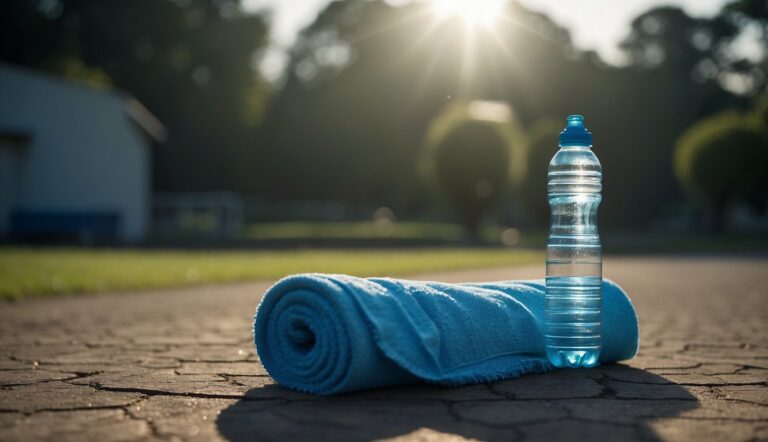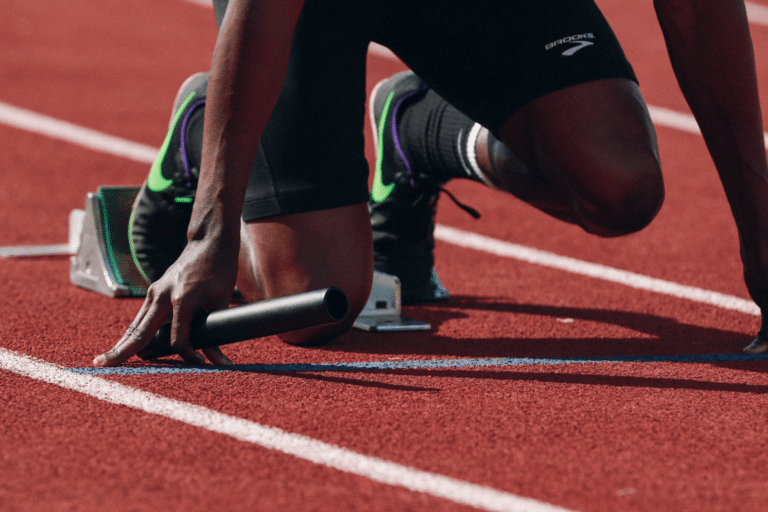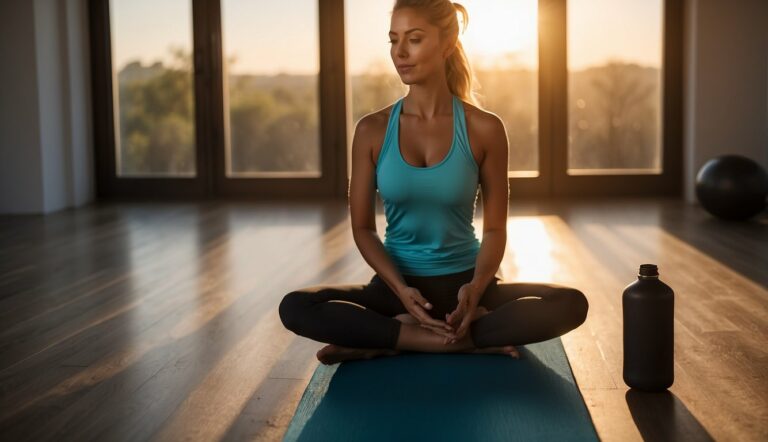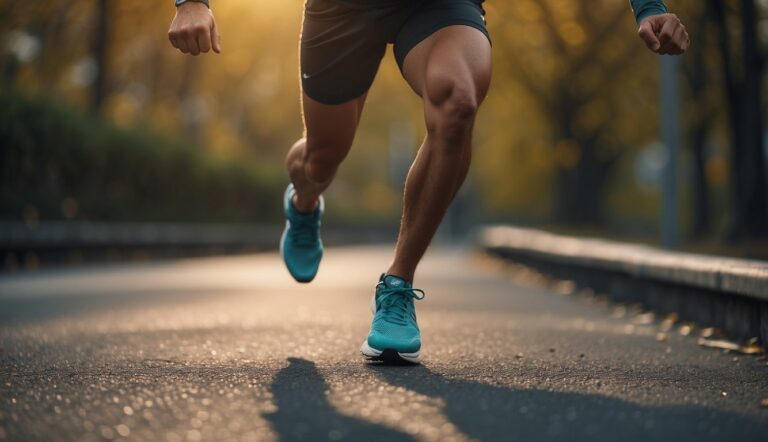Warm Up Routine for Older Runners: Essential Tips for Safe Exercise
When you’re an older runner, taking care of your body is crucial to maintaining your running routine and preventing injuries. Starting with a proper warm-up routine can make a significant difference.
Warm-ups not only prepare your muscles and joints for the physical stress of running but also gradually elevate your heart rate and increase blood flow, reducing the risk of strains and other injuries.
Your warm-up should be tailored to your body’s needs, paying special attention to areas that may have grown more vulnerable with age.
A good warm-up might begin with dynamic stretches that mimic running motions, progressing to light jogging or walking. This helps to activate the muscles you’ll be using during your run.
Remember, the key to a successful running experience as you age is to listen to your body and adjust your warm-up intensity accordingly. Injury prevention is paramount, and that starts with ensuring your muscles are appropriately warmed up before you embark on your run, regardless of the distance or pace you plan to tackle.

The Best Warm Up Routine for Older Runners (15 minutes)
As a certified running coach, I’ve created a warm-up routine tailored for older runners that addresses key areas of the body. This routine is designed to take approximately 5-15 minutes, beginning with a gentle walk and progressing through dynamic movements to prepare the body for running.
Here’s the warm-up routine:
1. Gentle Walk (3 minutes)
- Start with a brisk but comfortable walk to gradually increase your heart rate and warm up your muscles.
2. Ankle Circles (1 minute)
- Stand on one foot and lift the other slightly off the ground. Hold on to something for support, if needed
- Rotate the lifted foot clockwise for 30 seconds, then counterclockwise for 30 seconds.
- Switch feet and repeat.
3. Knee Lifts (2 minutes)
- While standing, lift one knee towards your chest and hold for a few seconds.
- Lower it and repeat with the other knee.
- Continue alternating knees, aiming for a smooth and controlled motion.
4. Hip Circles (2 minutes)
- Place your hands on your hips and stand with feet shoulder-width apart.
- Move your hips in a circular motion, 10 times clockwise and then 10 times counterclockwise.
5. Leg Swings (2 minutes)
- Hold onto a stable object for balance.
- Swing one leg forward and backward, gradually increasing the range of motion.
- Perform 10 swings on each leg, then switch to side-to-side swings for the hips.
6. Quad Stretch (1 minute)
- While standing, bend one leg back and grab your ankle, pulling it gently towards your buttocks.
- Hold for 15 seconds, then switch legs.

7. Dynamic Hamstring Stretch (2 minutes)
- Stand and place one foot slightly in front of you, heel on the ground and toes pointed up.
- Bend forward at the hips, keeping your back straight, and reach towards your toes.
- Hold for a few seconds, then switch legs.
8. Calf Raises (1 minute)
- Stand with feet hip-width apart.
- Push up onto your tiptoes, hold for a second, then lower back down.
- Repeat for a series of 10-15 raises.
9. Lower Back and Torso Twists (2 minutes)
- Stand with feet shoulder-width apart and arms out to the sides.
- Gently twist your torso to one side, then the other, allowing your gaze to follow the movement.
- Keep the motion controlled and avoid over-twisting.
10. Arm Circles (1 minute)
- Extend your arms out to the sides and perform small circles, gradually increasing the size.
- Do 30 seconds of forward circles and 30 seconds of backward circles.
Throughout this warm-up, focus on breathing deeply and consistently. Each exercise should be performed with attention to form and comfort, avoiding any sharp pain or discomfort. If any particular movement causes discomfort, modify or skip that exercise. After completing this routine, you should feel ready to begin your run.
Key Watch Outs Older Runners Should Keep in Mind While Warming Up
Older runners should consider several key factors when warming up, as their bodies may have different needs compared to younger runners:
- Increased Warm-Up Time: Older runners may require a longer time to warm up their muscles and joints adequately. The body’s tissues become less elastic and more prone to injury with age, so a gradual and thorough warm-up is crucial.
- Joint Care: Paying special attention to joints is important, as they may be more susceptible to stiffness and arthritis. Gentle, dynamic movements that target the ankles, knees, and hips can help increase joint fluidity and reduce discomfort.
- Muscle Elasticity: With age, muscles can lose some of their elasticity and may be more prone to strains. Incorporating dynamic stretching and avoiding static stretches before the muscles are warm can help prevent injuries.
- Intensity: Older runners should start at a lower intensity and gradually build up to their workout pace. A slow and steady approach allows the heart rate to increase at a comfortable pace.
- Listen to Your Body: It’s essential for older runners to be attuned to their body’s signals. If something feels painful or uncomfortable, they should modify the warm-up or consult with a healthcare professional.
- Balance and Coordination: Incorporating balance and coordination exercises into the warm-up can help prevent falls and improve neuromuscular control.
- Hydration and Nutrition: Older adults may have different hydration and nutritional needs. Ensuring proper hydration before starting a warm-up and considering a light snack if needed can help maintain energy levels.
- Recovery Time: Recovery may take longer for older runners, so they should ensure they’re fully recovered from previous workouts before starting a new one.
- Consistency: Maintaining a regular routine of exercise and warm-up can help with overall mobility and fitness levels, making it easier to stay active and reduce the risk of injury.
By considering these factors, older runners can tailor their warm-up routines to their specific needs, promoting safety, performance, and enjoyment of their running sessions.
Benefits of Warm-Ups for Older Runners
Stimulate Blood Flow and Heart Rate: A gentle warm-up kick-starts your circulatory system, gradually raising your heart rate and increasing blood flow to your muscles.
Prepare Joints and Muscles: Age often brings a reduction in muscle mass and joint flexibility. A comprehensive warm-up routine helps in lubricating your joints and extending your muscles, which is vital for maintaining mobility.
List of Warm-Up Benefits:
- Increased heart rate
- Improved blood flow
- Enhanced muscle flexibility
- Greater joint mobility
- Lower injury risk

Common Injuries and the Role of Warm-Ups
Injuries and Warm-Ups: Older runners are more susceptible to injuries such as strains, sprains, and stress fractures. An effective warm-up increases muscle temperature, making them more pliable, hence less prone to injuries.
Injury Prevention with Warm-Ups:
- Sprains: By improving joint mobility, a proper warm-up can help prevent sprains.
- Strains: Gentle stretching and gradual loading reduce the chance of muscle strains.
- Stress Fractures: Increasing muscle flexibility can also dissipate the forces exerted on bones, contributing to the prevention of stress fractures.
- Start with walking or light jogging to increase heart rate
- Perform dynamic stretches to bolster flexibility and mobility
- Ensure all major joint areas (ankles, knees, hips) are mobilized
- Avoid static stretches before muscles are warmed up
Designing Your Warm-Up Routine
A thorough warm-up routine primes your muscles and joints for running, reducing the risk of injury. It combines dynamic stretching to enhance flexibility, cardiovascular exercises to increase blood flow, and strength drills to improve stability.
Dynamic Stretching Essentials
Start with dynamic stretches to prepare your body for the movements involved in running. These exercises improve your range of motion and activate the muscle groups used while running.
- Leg Swings: Perform forward and side leg swings to loosen your hip flexors, hamstrings, and quads. Aim for 10-15 swings in each direction per leg.
- Lunges: Include front, side, and walking lunges to engage your glutes, quads, and hamstrings. Execute each lunge with a focus on running form: keep your knees aligned and torso upright.
Cardiovascular Exercises to Start
Prior to running, elevate your heart rate with low-impact cardiovascular activities.
- Brisk Walking: Begin with 5 minutes of brisk walking, progressing to a gentle jog.
- Butt Kicks: Perform butt kicks for 30 seconds to activate your hamstrings and improve knee lift while running.
Strength and Mobility Drills
Incorporate strength and mobility drills to foster stability in your ankles and knees, which are critical for your biomechanics while running.
- Ankle Circles: Rotate your ankles in both directions to improve ankle mobility.
- Hip Flexor Stretch: Execute a stretch for each hip flexor to maintain hip flexibility, holding for 15-30 seconds per side.
Incorporating Specificity Into Warm-Ups
To enhance your running performance and maintain stability, balance, and coordination, specific warm-up routines tailored to the running terrain and type are essential.
Adjustments for Running Terrain
- Trail Running: When tackling uneven trail surfaces, your warm-up should focus on dynamic stretching to improve ankle and hip stability.
- Hills: Prepare for hill running by including calf raises and lunges to build strength in the muscles used most on inclines.
| Terrain Type | Warm-Up Focus | Example Exercises |
|---|---|---|
| Trail Running | Ankle stability, hip flexibility | Leg swings, ankle rolls |
| Hill Running | Lower limb strength, propulsive power | Calf raises, lunges |
Warm-Ups by Running Type
- Sprinting: Emphasize short, explosive drills to prime your fast-twitch muscle fibers for speed work.
- Long-Distance Running: Incorporate endurance-based warm-ups like brisk walking or easy jogging to boost running economy.
| Running Type | Warm-Up Focus | Example Exercises |
|---|---|---|
| Sprinting | Muscle activation, reaction time | High knees, butt kicks |
| Long-Distance Running | Cardiovascular readiness, muscle endurance | Easy jogging, progressive strides |






